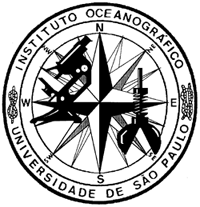The spatial distribution of bivalve molluscs and its relation to granulometry and to the percentage of organic matter and silt-clay were studied in the Saco do Céu Inlet. Bivalves and samples of sediment were collected in 39 stations, in January and July 1992, using a 0.1 m2 Petersen grab. The type of sediment varied from very fine to coarse sand. Nineteen species of bivalves were quantified, 14 of which were present in the two periods of the year. The highest diversity was found in medium and fine sand in summer and in coarse sand in winter. These bottoms presented a greater structural heterogeneity. A community dominated by Corbula caribaea was distinguished in fine bottoms with relative high content of organic matter, whereas another community dominated by Anomalocardia brasiliana occurred in coarser bottoms. Both communities were distributed in continuum along a sediment gradient.
Spatial distribution; community structure; bivalvia; soft-bottom; shallow-water; Ilha Grande Bay; southeastern Brazil
